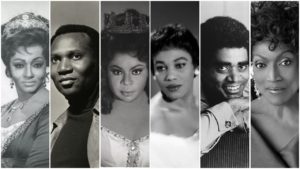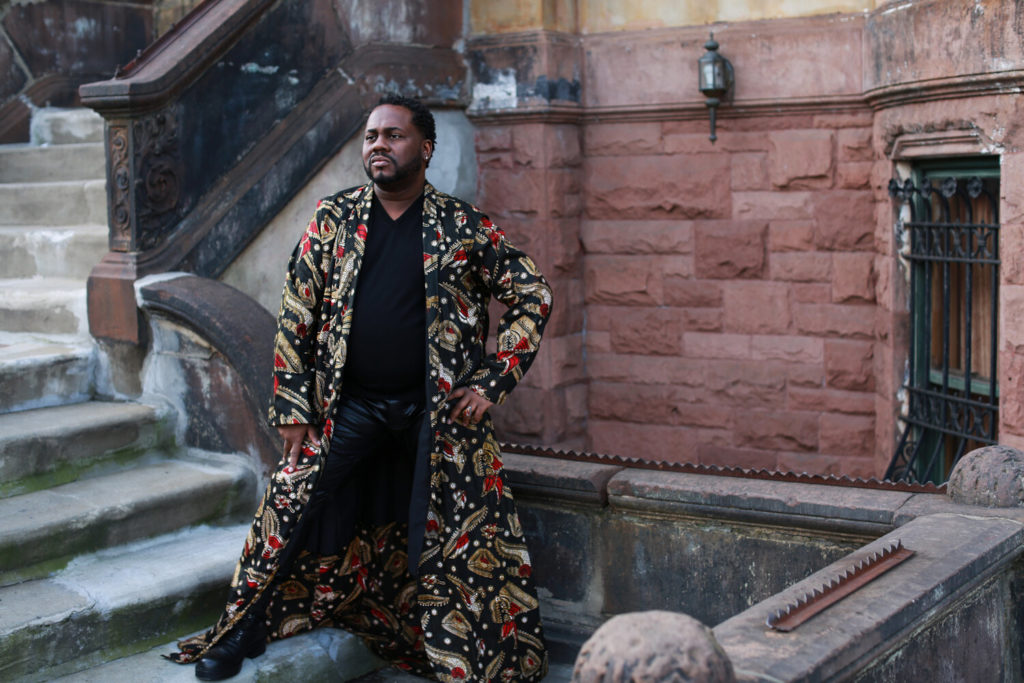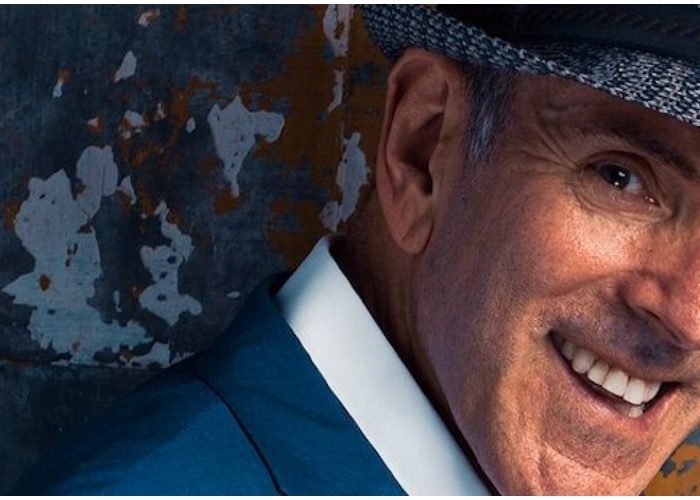
Black Opera – How Jonathan Estabrooks, Miranda Plant & Kenneth Overton Are Telling the Story of a Generation of Legendary Black Artists
By David SalazarBack in 2018, baritone Jonathan Estabrooks received a call from Lynne Block, the daughter of pre-eminent bass-baritone Simon Estes. She wanted to see if Estabrooks would work with her on a short documentary about her father’s life.
Estabrooks, an internationally renowned performer, was also actively involved in the recording industry, creating music-related documentaries, hybrid music videos, and directing a TV Series entitled “Rosie’s Place.” Given his background, this concept immediately appealed to him.
“I had worked in both the opera and the film world,” Estabrooks told OperaWire. “So this was a nice pairing of two facets of my creative life.”
Unearthing A Disappointing Truth
In the run-up to his work with Estes for the short documentary, Estabrooks convened with Miranda Plant, a fellow Canadian filmmaker and the two engaged with researching the legendary artist’s continent-spanning career to see how they could focus and develop the film. They even considered that there might be the potential for this project to turn into a feature film about the bass-baritone.
But in their research, they were immediately struck not by the wealth of cinematic information, but the lack of it.
And it wasn’t just an issue regarding Estes’ legendary career. It was an issue with an entire generation of legendary black opera singers.
“It was shocking how little there was out there in terms of documentary film content about Mr. Estes, but also on legendary black opera singers. It became apparent to me that there was something more here.”
“This generation hadn’t had their due,” Plant, who has worked on a number of film projects as an actress, producer, and director, told OperaWire. “They hadn’t had an opportunity in the film world to have their stories told.”
The two decided that they wanted to change this.
“Black Opera” was born.

Kenneth Overton (Credit: Suzanne Vinnik)
The Team is Complete
In 2019, baritone Kenneth Overton got an email from a friend telling him about a documentary project that he might be interested in.
Overton, a renowned opera singer who has performed with such companies as The New York City Opera, the San Francisco Opera, the New York Philharmonic, Opera Tamp, Opera Carolina, and Sacramento Opera, among many others, is also a champion of black artists, having created Opera Noire of New York, a performing arts company that provides opportunities for Black artists and composers.
Upon hearing about this project in development, Overton met up with Estabrooks and Plant and became “extremely passionate about it.”
“I realize that in my own collection I have documentaries of Callas and Pavarotti and there’s only maybe one documentary about Marian Anderson,” Overton told OperaWire. “There was just a huge lack of documentation about these artists’ lives. So to be a part of something like that, it was a no brainer.”
For Overton, this would be the first time he would engage in film production, a challenge he welcomed head-on.
“I felt like it was time for me to do something outside of my singing comfort zone and also to give back in a way to both the legends and to the community at large,” Overton noted.
Six Icons
The first major challenge in creating the project was charting out how it would be structured and focused. The history of opera features a number of major Black artists and it could easily have been about the entire generation as a whole.
But the team knew that to create the impact they wanted, they would need to hone in on a few unique individuals.
In the end, they settled on six artists – Simon Estes, George Shirley, Leontyne Price, Jessye Norman, Martina Arroyo, and Grace Bumbry.
All of these artists are major icons in their own rights. Shirley was the first Black tenor to perform at the Metropolitan Opera, while Bumbry was the first Black woman to sing at the Bayreuth Festival. Meanwhile, Norman was the first Black woman to sing Elisabeth in “Tannhäuser” at the Bayreuth Festival, and Price was the first Black singer to headline a Met Opera season-opening gala. And that’s just the tip of the iceberg for this particular group.
“There is a common thread: growing up in the South in the 1940s and 50s; the strong values of an emerging African American middle class with respect for heritage, faith, and the power of music; the lifelong support and love of parents and siblings,” the team wrote in a document outlining the film’s structure. “[During the first part of the documentary] the artists discuss finding their calling, their first mentors/teachers, and how they built a path to a career in opera at a time when it was still rare for African Americans to be cast in roles with major opera companies.”
“Many of them beyond Leontyne Price and Simon Estes were given Medals of Honor by Barack Obama, the first black president,” Estabrooks added.
Once they had established the artists they would focus on, it became a matter of actually reaching out and connecting with the artists.
Estabrooks’ relationship with Estes established the legendary artists’ involvement early on. From there, they made cold calls to the other artists, reached out via email, and sent their proposal. Bumbry, Arroyo, and Shirley all said yes “immediately.”
From there, they managed to set up interviews throughout 2019.
“Speaking to them, we were able to understand what the important moments in their lives were, the challenging moments of their careers, and what the highlights were,” Plant noted. “And that’s not something research can tell you. Research can tell you what they’ve done, but it’s been really important to hear from the artists what’s been important to them.”
Overton had studied and worked with several of the artists highlighted in the documentary. But he was invigorated to find even more information about them throughout the process.
“I’ve known Mr. Shirley now for just over 20 years and Ms. Arroyo for a solid 15 years,” he told OperaWire. “And they’ve both been like mentors to me and very generous and kind to me. But to talk to them about their lives and careers on this sort of level, I learned things about them that I didn’t know. And I consider myself a history buff as it pertains to opera singers who are black.
“I look to these people so I thought I knew all there was to know,” Overton continued. “But when I found out these beautiful nuggets about what it was like when Mr. Shirley went to Europe for the first time and how the Italians embraced him. And how they were shocked at his level of preparation with the language and the style of when he sang ‘La Bohème’ for the first time. And how he was able to raise his family. And how he came into getting voice lessons from a gentleman when he was finishing his third year in the army corp. A gentleman who promised him within a year that he would be a big star and would have a great career. These are the stories that aren’t written down in the history books.
“So, I was there sitting there like a kid in the candy store soaking in all those anecdotes.”
While the team had assembled interviews with most of the artists, they still had two pending – Jessye Norman and Leontyne Price.
But neither would come to fruition.
They had been in the process of reaching out to Norman when the famed diva passed in late 2019 at the age of 74.
“It was certainly a blow to us but more than anything, it lit a fire under us to move quickly, made us realize how crucial their stories were and how important it was to capture in-person interviews while the remaining legends were still with us,” Plant noted regarding Norman’s passing. “It is such an important part of the film and why we feel this project is unique among many documentaries because of the ability of these icons to tell their own stories.”
And a few months later, the company was told that Price would not be able to appear on camera for an interview.
“We are hoping to interview family members or people close to her,” Plant noted. “Colleagues or teachers who can speak to her career and what she accomplished and some of the moments where she faced adversity and triumphed as well.”
The plan is to implement a similar strategy in telling Norman’s story as well.
Moving Forward
Then came the COVID-19 pandemic, which could have proven another setback for the crew, as it has for many opera companies and film projects around the world.
“That slowed our progress but hasn’t stopped it by any means,” Estabrooks noted.
To that point, the film was well underway. The trio had managed several interviews and other b-roll footage with the artists in their everyday lives.
And per Estabrooks, the footage compiled to this point could be enough to complete the film.
But the trio feels that there is still a lot to be done. In addition to obtaining more footage of the artists in their everyday activities and additional interviews (the group did an interview with Shirley in early June and will interview Bumbry and Estes in July), there is still some funding to secure.
“We want this to go to movie theaters. We want to take these stars to the major film festivals,” Estabrooks noted. “We can make a great documentary with what we have, but we are hoping to secure those large investments to put it over the top.
“Documentary films have always been a challenge to fund,” he continued. “We feel strongly about the amazing film we have here and we want it to have its rightful place in a cinematic way.”
And then there is the question of editing, which both Estabrooks and Overton noted would be the project’s greatest challenge.
The group conceded that they can easily tell a strong story of one artist in the documentary form. But to balance the historic careers of the six is a challenge they all embrace
“They are all so incredible that you could do an individual film on each one,” Overton noted. “To have each one shine equally in a single film. It would be a celebration to them and the times.”
Not lost on the trio is how the stories of these legends dovetail with many of the conversations about racial inequality taking place throughout the entire world. In their conversations with the legendary artists, many doubled down on the fact that things have not changed all that much from when they were establishing themselves in the opera world.
“Simon Estes has spoken to us about these same issues, which is the way that Black artists are portrayed on stage. Black men were perceived as having to be tall and statuesque and threatening,” Plant noted, emphasizing that another anecdote from Shirley described how the issue permeated the opera world today. “He told us that at the start of Lawrence Brownlee’s career, his student, Robert Mirshak, told George that a manager had said of Brownlee ‘He’s good, but he won’t go very far.’ Mr. Mirshak responded, ‘Why?,’ and the other manager responded ‘Because he’s short and Black.’ This of course didn’t stop Mirshak from signing Mr. Brownlee immediately.”
Overton addressed that in order for progress to truly take place, it has to start at the top.
“It starts with changing the palette of people that have the keys to the gate. You need someone on the other side of the stage, in the offices of the administration that think that it’s viable, or that are brave enough to stand up to their donors and board of directors to say ‘Hey there is more to American opera than white Americans or European stars,’” he noted. “In America tend to take our cues from the bigger houses. We take our cues from the Met, from Washington, or San Francisco and Chicago. And what they show us is European stars and a handful of the same black singers.
“So there are times when I go to sing and people are still shocked that this is what I do. Or they weren’t aware that there were so many black singers. Well, why not? There are thousands of them. So I think we need to change the complexion of opera administrators, particularly general and artistic directors to increase the donor base and audience base because I have seen that the only time that American opera houses reach out to the black community is when they are mounting ‘Porgy and Bess’ or another opera that is centered around black life. They don’t go into neighborhoods of color when they are advertising ‘La Bohème.’ And black communities have become resentful of that. And when they don’t see people that look like them on stage, then why would they spend their money? They don’t.
“We have to change who we let in the door as donors and have an equal seat at the table,” Overton concluded. “Not to dismiss the people that are there, but just make the table bigger and invite different guests.”


